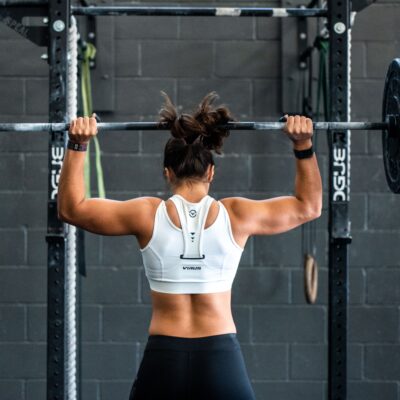
Your Life, Upleveled.
Remember, you are worth making a top priority. And while you do, don’t forget to embrace the vast array of interests and passions that make life so fulfilling.
Every day presents an opportunity to become the best version of yourself and bring your biggest dreams to life. By prioritizing healthy habits, pursuing your goals with dedication, and savoring all that life has to offer, you can create a life that inspires you and those around you.
Healthy body. Strong mind. Thriving connections. What more do you need?
Make someday today and take charge of your health and wellness.
Body
Discover how regular exercise, proper nutrition, and overall wellness can transform your body into its fittest version. We delve deep into the best practices that aid in fortifying physical health, boosting energy levels, and enhancing physical appearance.
Mind
Mind fitness is as crucial as physical fitness. In fact, a fit mind often acts as a fertile ground for personal growth, success, and overall well-being. The integration of mindfulness, self-improvement, and motivation can thus create a powerful synergy, helping one to cultivate a stronger, healthier, and more resilient mind.
Connections
Building connections with others – whether it’s a romantic partner, a friend, or even ourselves – is elemental to our existence. These connections not only shape our experiences but deeply influence our perceptions, decisions, and outlook on life.
Life is like riding a bicycle.
Cycling is a delightful medley of exploring boundless terrains, chasing sunsets, and feeling the intoxicating thrill of speed beneath our pedaling feet.
Every path leads to a new discovery and every ride feels like a mini vacation.
From popular bike brands, accessories, and gear to bike repairs and even bike types, we’ve got you covered.
The Latest And Greatest
Check out our most recent posts dedicated to helping you boost energy, improve focus, be happy, feel amazing, and show up powerfully each and every day.
$150 Amazon or PayPal Cash Giveaway (Ends 5/31) @Versatileer
Welcome To The $150 Amazon eGift Card or PayPal Cash Giveaway! Enter for a chance to win a $150 Amazon eGift Card or PayPal Cash. The giveaway is open worldwide wherever PayPal is accepted. Participants must be 18 years or older. The promotion runs from April 16th to May …
Top 10 Worst Cities Where Bike Theft Is Most Common
Bike theft is a serious issue that can leave victims with a challenging and costly recovery process, and unfortunately, in many cases, their bikes are never found. However, by taking action and raising awareness about this problem, we can work together to create a safer and …
Best Bikes for a 60-Year-Old Woman
Are you on the lookout for the perfect bike for a 60-year-old woman? Well, look no further! Senior-friendly step-through bikes are just what you need. These bikes prioritize comfort and make riding a breeze while also being gentle on the joints and back. And if you’re …
10 Tips for Ensuring Better Lung Health as you Age
As we age, our lung capacity and function gradually decline, making us more susceptible to respiratory diseases. For instance, the diaphragm can weaken, while lung tissue that is essential for breathing can also lose elasticity, narrowing the airways. Hence, the importance …
The Modern Man’s Path to Peak Physical and Mental Health
Let’s talk about something often overlooked: your health as a man. There’s a common belief that men should just “tough it out” and not fuss over their health. But that’s not right. To be at your best physically and mentally, you need to do …

You’ve Got To Be In It To Win It
An exciting collection of fun giveaways and amazing blogger opportunities that you won’t want to miss out on!
From incredible prizes to exclusive perks for bloggers, there’s something for everyone. Click below to discover all the exciting details!









